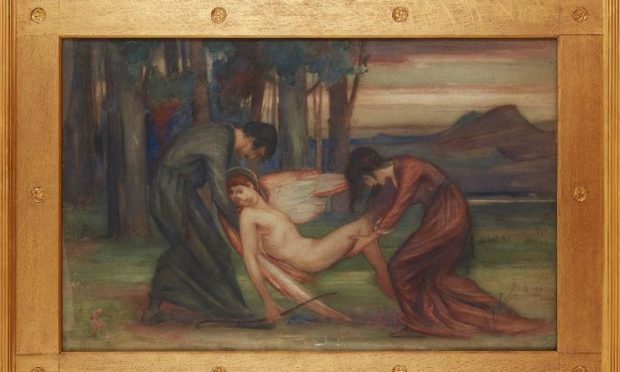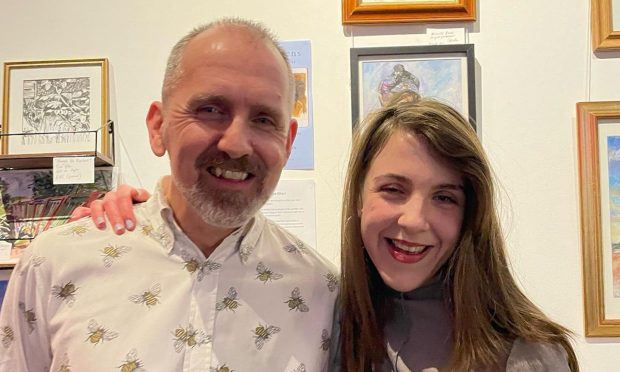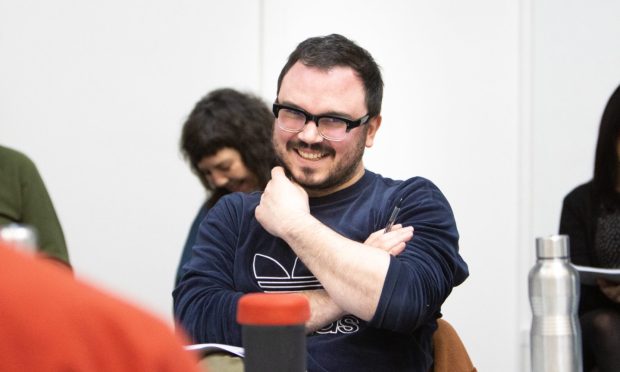Stewart Carmichael is one of the unsung jewels in Tayside’s artistic crown.
His work glitters and glows, but remains largely on the periphery of the galaxy of stars aligned in major galleries.
His portrait of a kilted boy holding a tin battleship once hung in my home.
“Is that you?” asked a visitor. I nearly clocked him. The picture dated to 1920!
Dundee-born Carmichael (1867-1950) was best known for his leading role in the Celtic Revival movement in his native town, creating striking allegorical paintings of scenes from Celtic mythology and Scottish history.
In the McManus collection
As a young man, he was inspired by the work of fellow Dundonian artists George Dutch Davidson and John Duncan, with whom he had trained at Dundee School of Art. He continued his studies in London, Antwerp and Brussels.
Carmichael’s Mysteries, a watercolour composition of portraits representing Birth, Life and Death, was one of the first works in Dundee’s permanent collection when it was added in 1903.
The McManus now has upwards of a dozen of his works.
So to last month’s fine art auction at Lyon & Turnbull in Edinburgh and Carmichael’s Love Wounded: Study.
Although not described by the auctioneers, it appears to be a mythical depiction of a fallen Cupid, the Roman god of love in all its varieties. I show it in its wonderful ‘Glasgow School’ frame, which I take to be the original.
Painted in watercolours, signed – as customary – with ‘SC’ interlocked initials, it was dated 1915 and measured 23 x 33 inches.
A pre-sale estimate of £600-£800 was never going to secure this local gem, and it sold for £3500.










